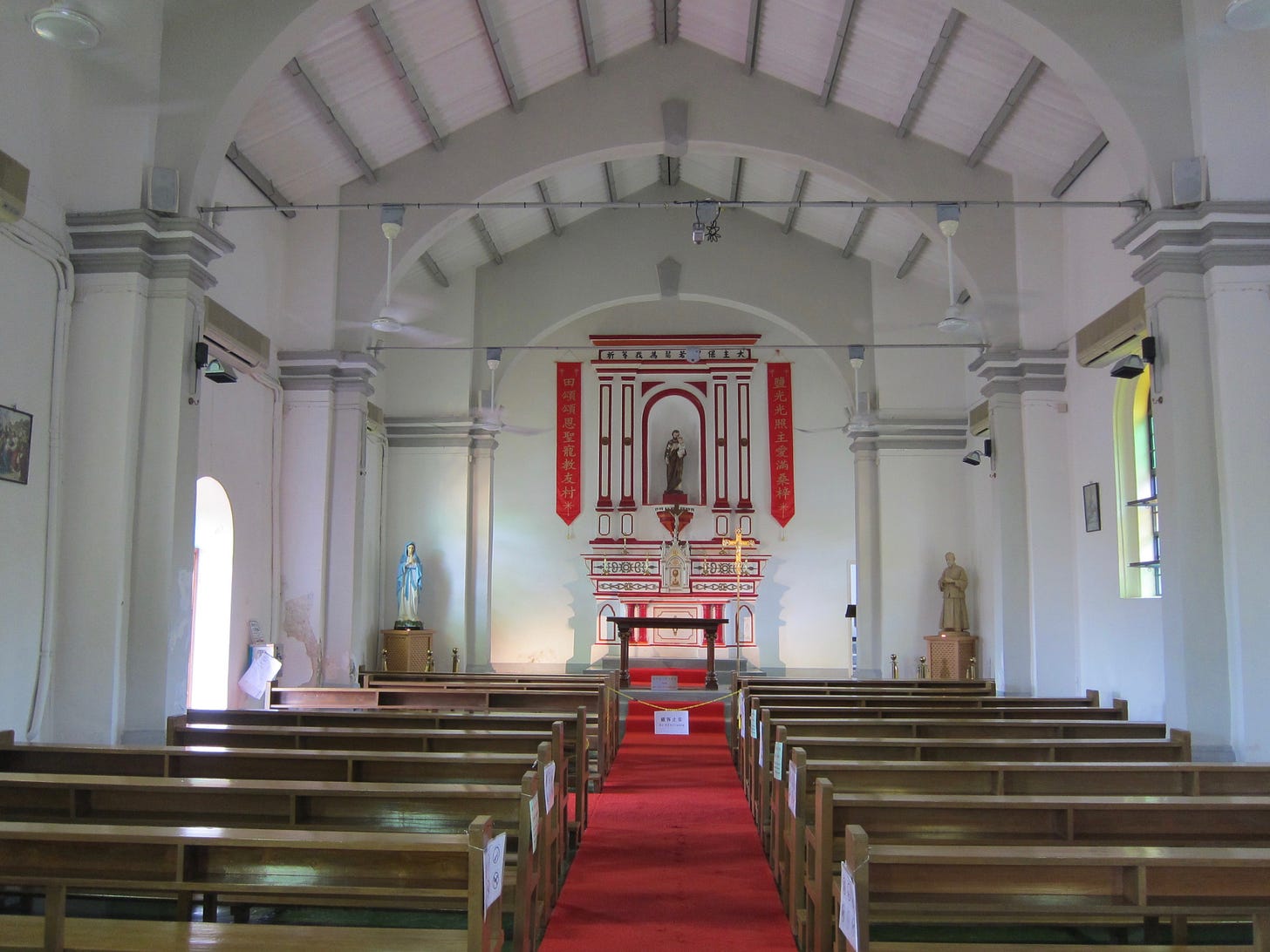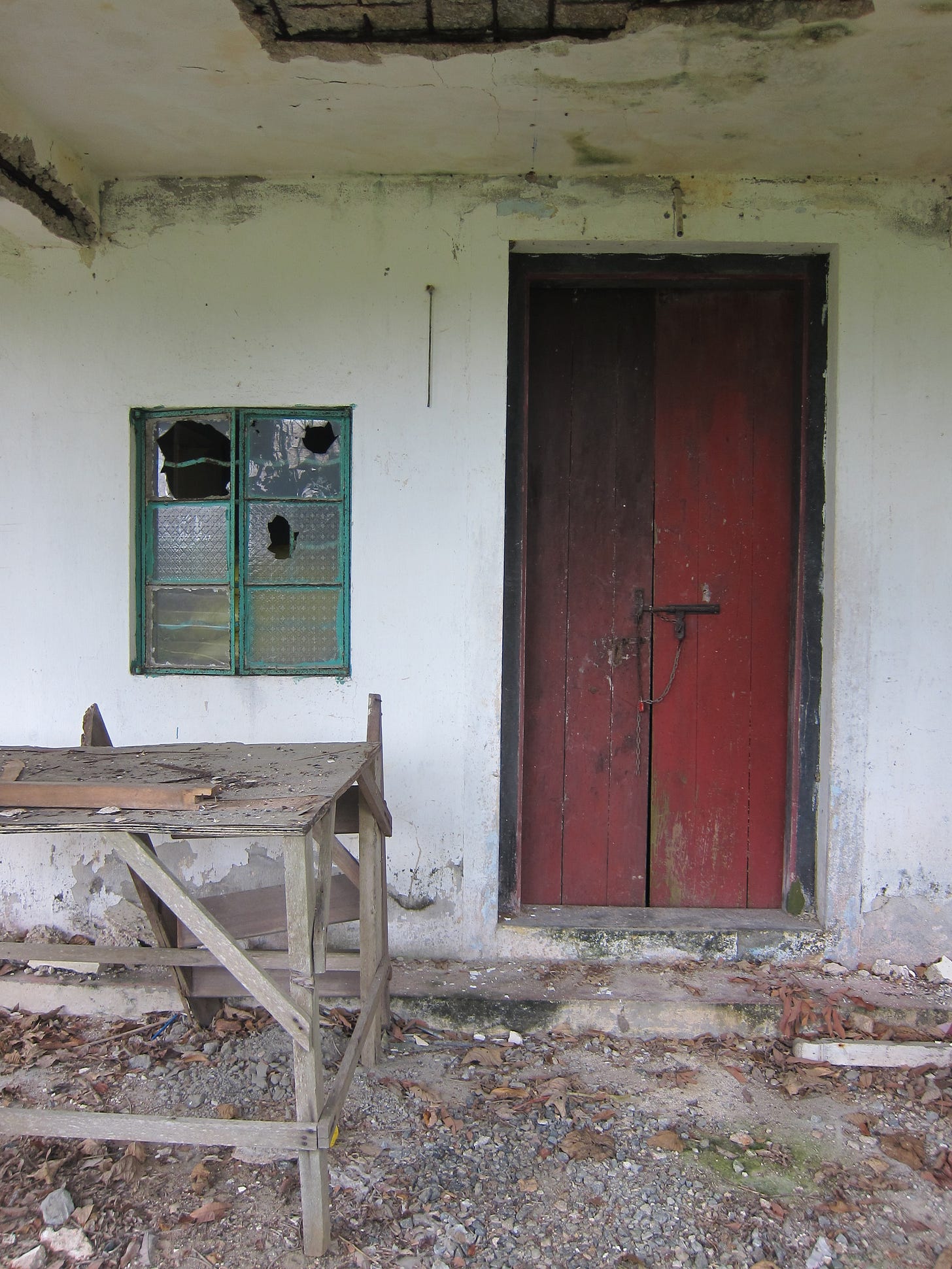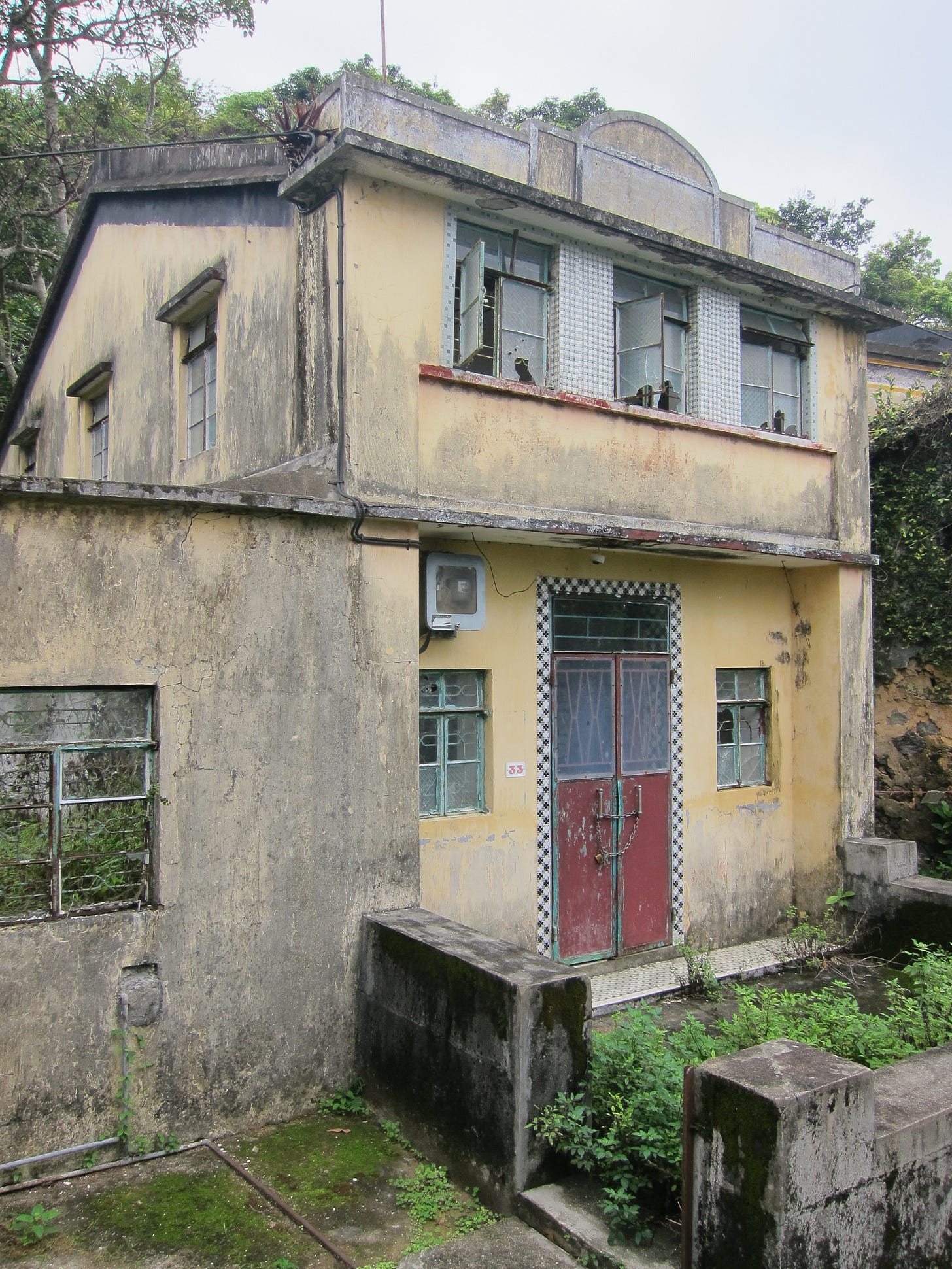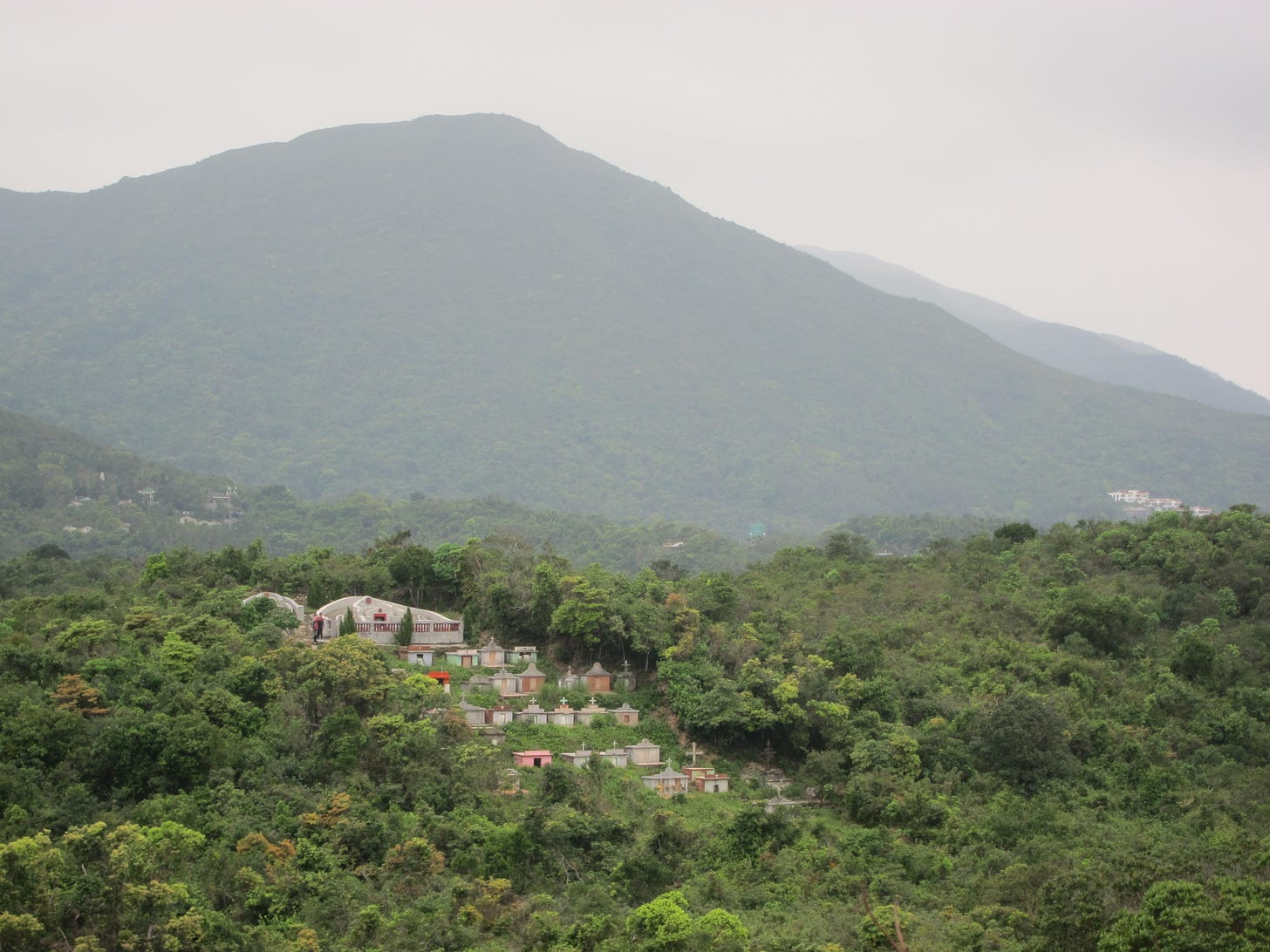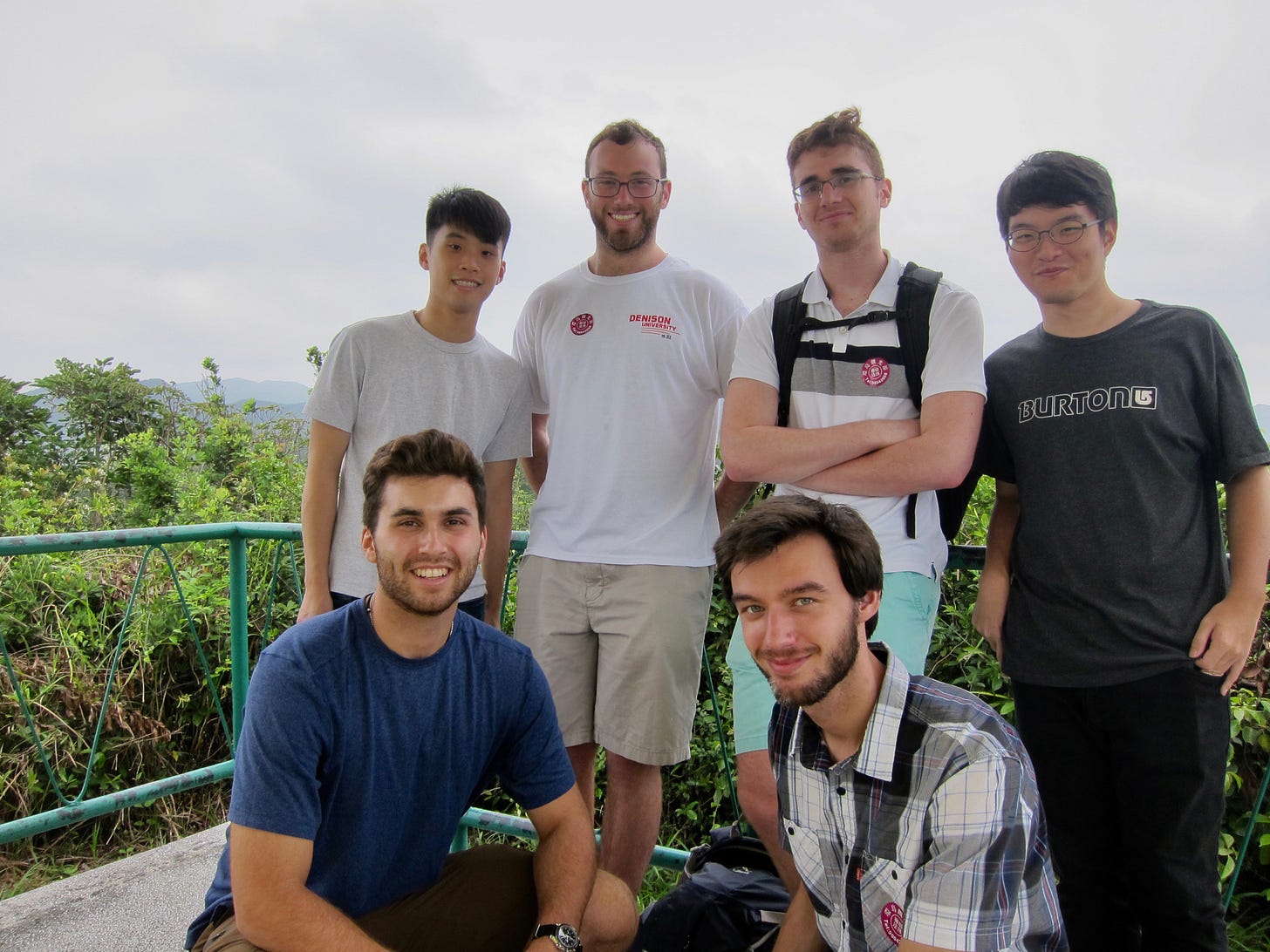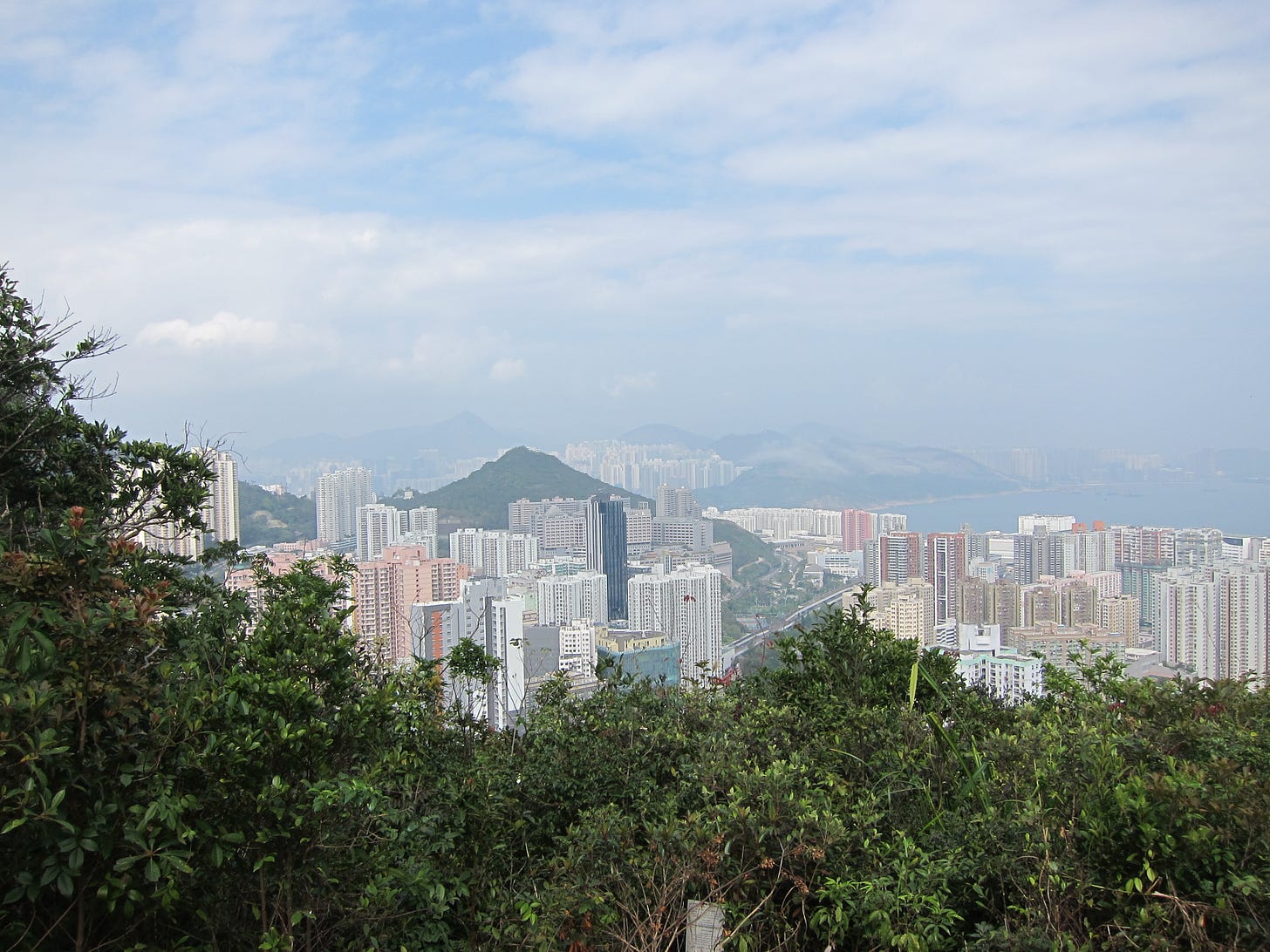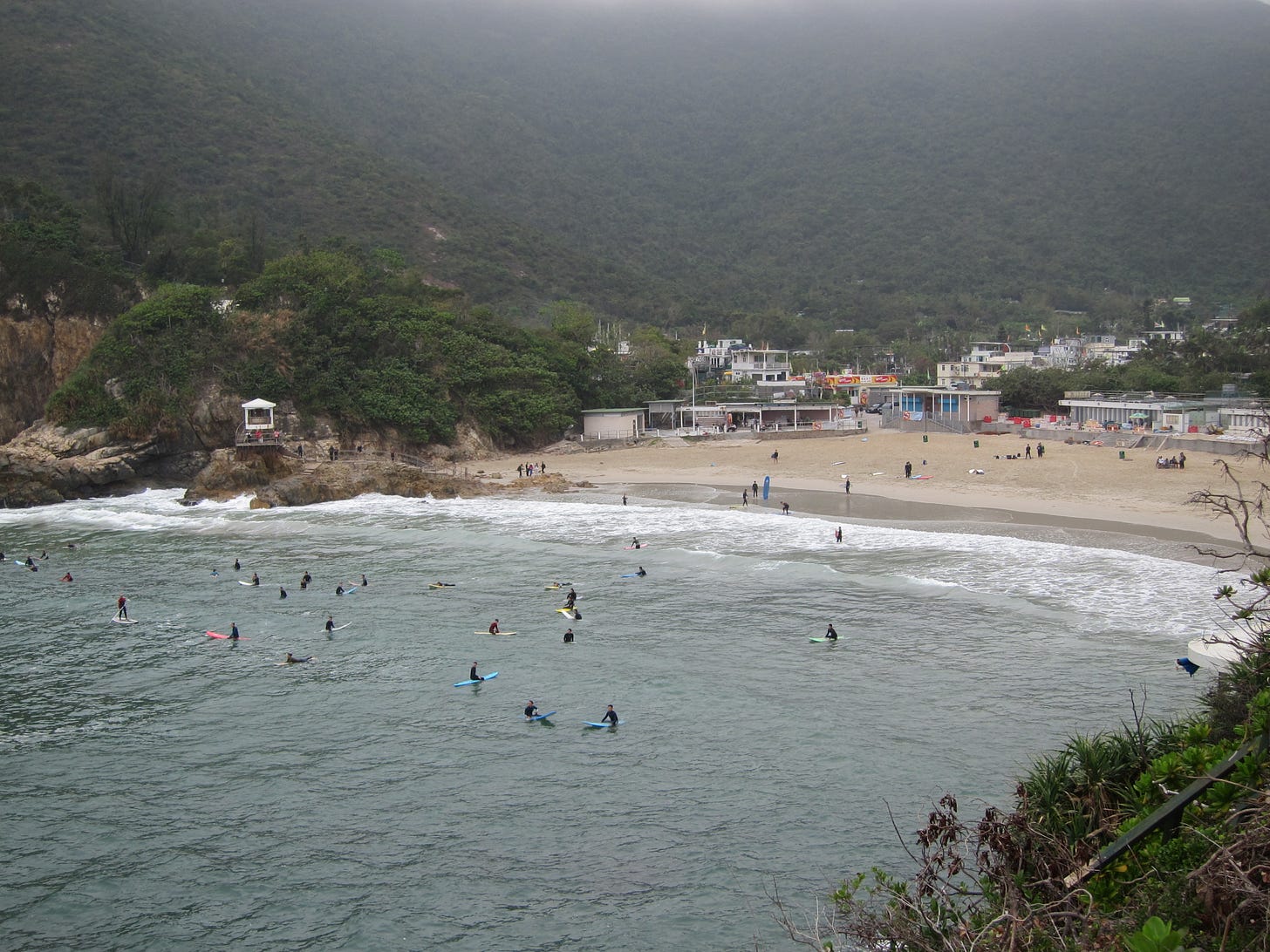My look back at my time in Hong Kong continues, along with updated commentary from native Hong Konger Alex and myself.
Gallivanting in a Ghost Town (originally published April 5, 2019)
From my time in the American West, I have grown fond of ghost towns – empty places where few or no people live today that not too long ago used to be inhabited. I have visited four ghost towns in the United States: Jeffrey City, Wyoming (pop. 58, but down from several thousand), Gebo, Wyoming (pop. 0), Cottonwood, South Dakota (pop. 9), and Scenic, South Dakota (pop. 4), and they seem a quintessentially American thing, the setting for episodes of TV Westerns (and an episode of the Brady Bunch).
But it would seem that anywhere there is a heavy reliance on one economic activity, a ghost town can exist, even in the worldʼs most expensive housing market. This is the case of Yim Tin Tsai, a tiny island of the eastern coast of Hong Kong that was inhabited for over a century before the last residents called it quits.
But how does one get to Yim Tin Tsai? Well, it depends on where you are coming from, but in my case it involved three subway lines, a bus to Sai Kung, and a ferry. Sai Kung is a seaside resort town with a row of seafood restaurants with ocean views and multiple small ferries that take vacationers to peaceful offshore islands. A round trip from Sai Kung to Yim Tin Tsai is HK$50.
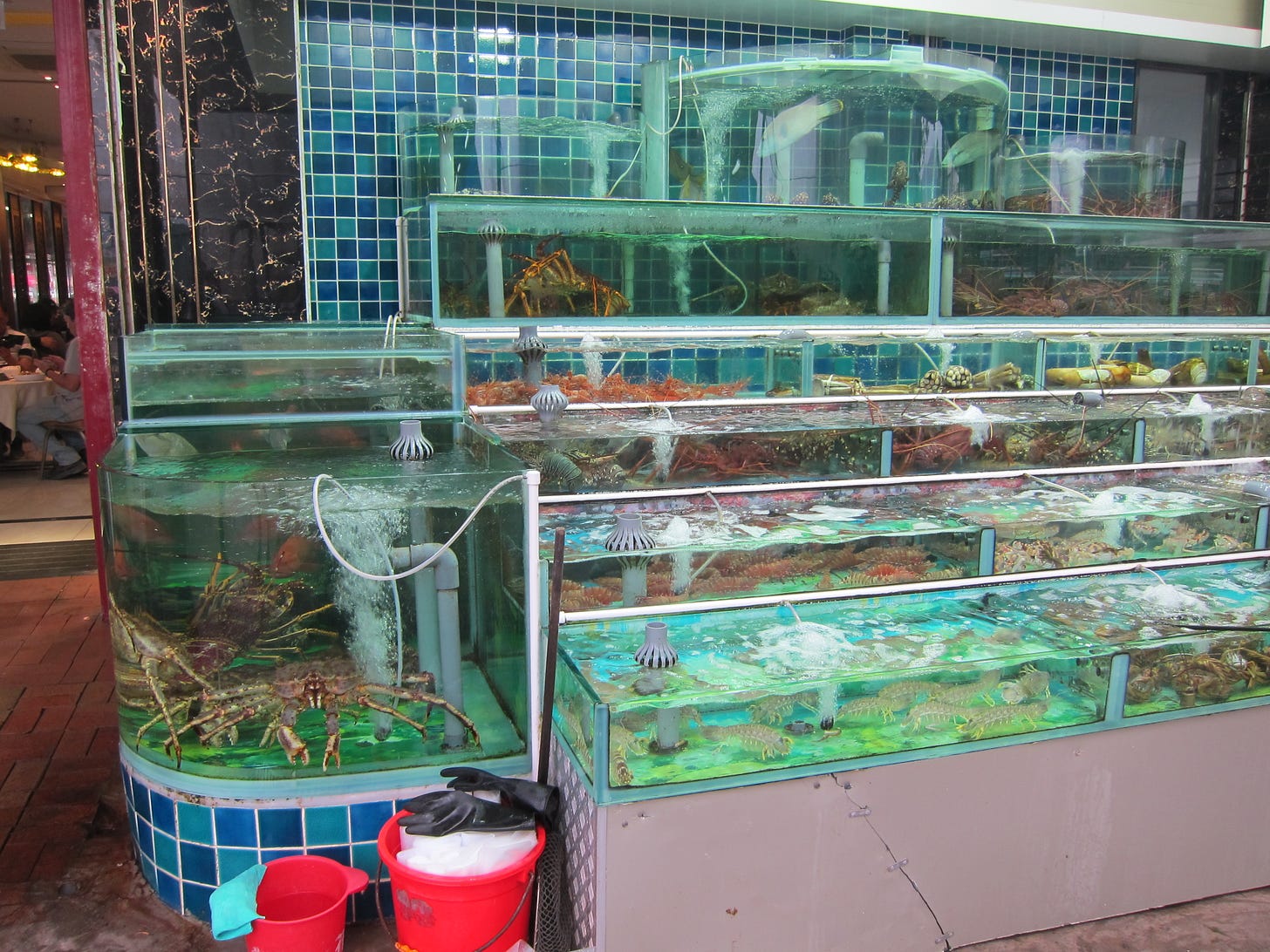
The ferry ride is pleasant (and only offered on weekends), with nice views of lushly forested islands on the way to Yim Tin Tsai. The island was formerly inhabited by Hakka villagers, an ethnic minority, along with successful Catholic missionaries who arrived in the 19th century, among them St. Joseph Freinademetz, who helped build the UNESCO designated church that still stands today.
The main economic activity for the villagers was salt farming, but when competition from abroad increased, it ceased to be profitable, and the residents left for opportunities elsewhere.
The buildings sit quietly succumbing to nature at various rates, and you can see inside a few of the buildings that no longer have doors.
Yim Tin Tsai has another feature it shares with other ghost towns: a cemetery. As if to really drive home the syncretic nature of Hong Kong, the graves have Christian crosses but are located on a hill, in what I suspect is an attempt for better feng shui.
Today, it has a population of at least one, a caretaker of the church who I can only assume dresses up as a ghost and tries to scare off Scooby and the gang now and then. This, along with the other visitors and the presence of a few (open) restaurants, gives it a bit of a different feel than other ghost towns. Even if it is a bit different, it still makes for a nice day trip.
Cantonese phrase of the post: yim tin tsai (little salt field)
Adam: I still enjoy visiting ghost towns from all eras, and in a way almost everyone does when you consider that places like Pompeii are technically just really old ghost towns.
Salt farming may not be profitable in Hong Kong anymore, but it is still an economic activity in Samut Songkhram, Thailand, where I used to work. When I left in January 2023, salt harvesting was just starting, with workers filling baskets of salt from shallow pools of saltwater that dry up in the tropical heat.
Alex: Yim Tin Tsai is still the only ghost town I’ve visited to date. I should visit some if I have the chance in Europe or in the US. Yim Tin Tsai was one of the origins of the Catholic Church in Hong Kong. It gave me the felling of the mix between Eastern and Western culture with a sprinkle of religious influence. It’s also a pretty manageable hike for the general public as well.
Dragon’s Back to Big Wave Bay (originally published April 17, 2019)
One of Hong Kongʼs most famous hikes is Dragonʼs Back, located on the eastern part of Hong Kong Island. To get there, you have to take a bus from Shau Kei Wan MTR station, which will drop you off right at the start of the trail. The path follows the spine of some large hills, giving nice views of both sides. The first section lacks shade, but the second half heads through a more forested area. I did the hike with two other students in under three hours, including a break for lunch, although the guidebook I have claims that it takes about 4.
The hike is nice, although I donʼt think itʼs as spectacular as is claimed. It does have some nice views, but Hong Kong is full of places that have nice views, and its views werenʼt all that different than others that are easier to get to.
What Dragonʼs Back does have that other hikes donʼt have, though, is a beach at the end of it. Big Wave Bay is a beach popular with surfers year-round for decent sized, if not truly big, waves. Wetsuit and surfboard rental is available, along with a few restaurants to feed a hungry hiker or swimmer. I ordered the Hong Kong style French toast for HK$20 (US$2.55), which was fantastic. HK style French toast involves deep frying the bread and in many cases drizzling condensed milk on top, but in this case it also had peanut butter inside the bread. Yum.
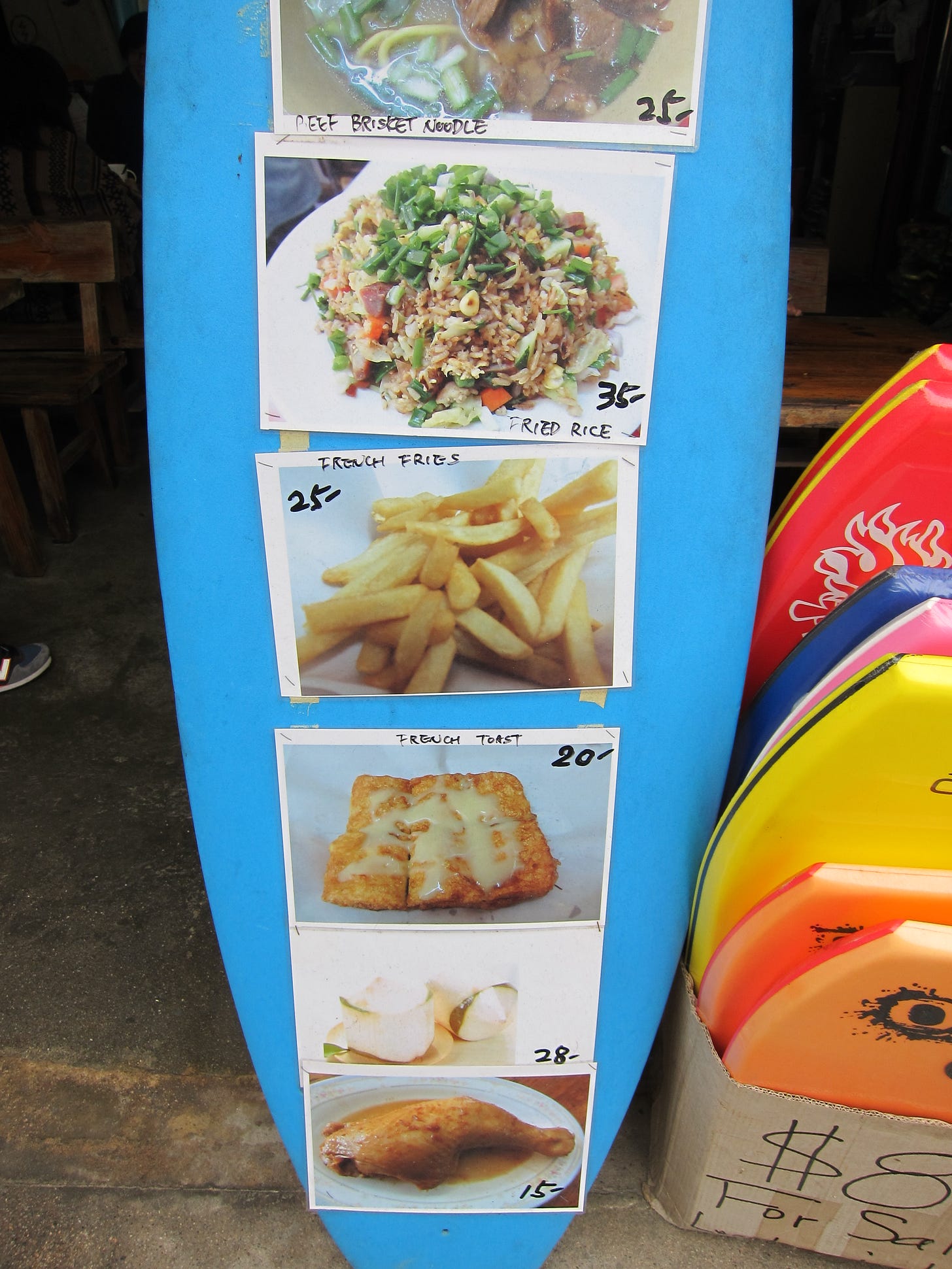
In case youʼre full and the beach isnʼt for you, there is a nice petroglyph carved in the rocks on the left hand side of the bay, as well as other hiking trails.
To leave, you can either hike out, or you can take a green minibus directly to Shau Kei Wan MTR station. Cantonese word of the post: seui (water)
Adam: Dragon’s Back likely gets talked about more than other trails because of its relative proximity to Wan Chai and Causeway Bay (I’d say “downtown Hong Kong,” but that’s a fuzzy concept in a city as large and built up as Hong Kong). I would always recommend reading guidebooks to people living in a foreign city, but it’s worth noting that those guidebooks are often written for tourists that may be staying at hotels downtown rather than the residential neighborhood where you live. After I hiked Dragon’s Back I would eventually go on a nice hike much closer to where I was living that showed things that you wouldn’t see from staying in those more touristy areas.
Alex: I tried surfing once at Big Wave Bay with my exchange friends without any prior experience. We chose the winter because there were way fewer people. Once I got used to the water temperature, the wetsuit was surprisingly great at maintaining warmth. I was mostly just paddling on the board and falling when I tried to stand up. Nonetheless, it was a fun experience.
Speaking of French toast, it’s one of the food items that any tourists have to try in my opinion. The easiest way is to dine in a local cha chaan teng (HK style cafe) during tea time. Besides French toast, you can usually find other authentic HK foods there like red bean coconut drink, pineapple bun with butter, HK style milk tea and so on. There are quite a few chain cha chaan tengs and some famous ones in guidebooks. Those are fair but if you ask any locals, we often suggest our own local small Cha Chaan Tengs, which are not on any guidebooks. It’s quite hard for tourists to dine in those places, unfortunately, due to the language barrier. So, don’t be shy and ask your friends from Hong Kong to take you to one of you have a chance!



